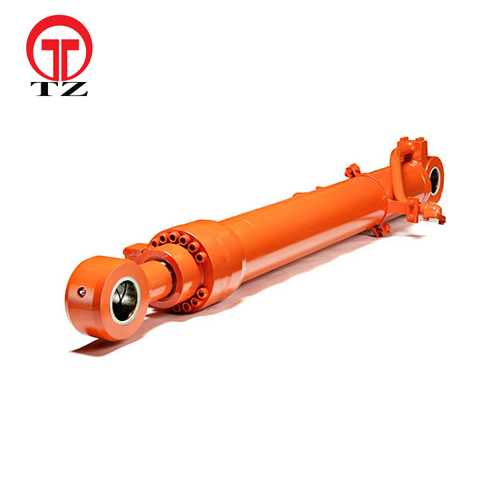Hydraulic boom cylinder assemblies by hydraulic boom cylinder assembly manufacturer, Son componentes indispensables de la maquinaria industrial., Proporciona movimiento preciso y potencia de elevación en diversas aplicaciones.. Entendiendo sus componentes, principios de trabajo, applications, maintenance considerations, and industry trends empowers engineers and technicians to optimize the performance and longevity of these systems.
Unveiling Hydraulic Boom Cylinder Assemblies

Hydraulic boom cylinder assemblies are mechanical devices that utilize hydraulic power to extend and retract a boom, typically found on cranes, excavadoras, and other heavy machinery. These assemblies consist of several key components:
- Hydraulic Cylinder: The hydraulic cylinder is the heart of the assembly, converting hydraulic pressure into linear motion. It comprises a cylinder barrel, pistón, vástago del pistón, y sellos.
- Auge: The boom is the extendable arm attached to the hydraulic cylinder. It is typically made of high-strength materials like steel or aluminum to withstand heavy loads.
- Hydraulic Hoses and Fittings: Hydraulic hoses and fittings connect the hydraulic cylinder to the hydraulic power source, ensuring a continuous flow of hydraulic fluid.
- Control Valves: Control valves regulate the flow of hydraulic fluid into and out of the cylinder, enabling precise control over the boom’s movement.
Working Principles of Hydraulic Boom Cylinder Assemblies
Hydraulic boom cylinder assemblies operate based on Pascal’s principle, which states that pressure applied to a confined fluid is transmitted equally throughout the fluid. Here’s how these assemblies work:
- Hydraulic Power Source: A hydraulic pump generates pressurized hydraulic fluid, which is then supplied to the cylinder.
- Extension: When hydraulic fluid is directed into the cylinder, it exerts pressure on the piston, causing it to extend the boom.
- Retraction: Reversing the flow of hydraulic fluid allows the piston to retract, bringing the boom back to its initial position.
- Control Valves: Control valves regulate the flow and pressure of hydraulic fluid, enabling precise control over the speed and direction of boom movement.
Applications of Hydraulic Boom Cylinder Assemblies
Hydraulic boom cylinder assemblies find extensive applications in various industries:
- Construction: Cranes, excavadoras, and other construction equipment utilize hydraulic boom cylinders for lifting and positioning heavy loads.
- Mining: Mining equipment, such as shovels and draglines, rely on hydraulic boom cylinders for efficient material handling.
- Agriculture: Agricultural machinery, including tractors and harvesters, often incorporate hydraulic boom cylinders for precise movement and control.
- Forestry: Forestry equipment, such as log loaders and skidders, utilizes hydraulic boom cylinders for lifting and transporting logs.
- Material Handling: Hydraulic boom cylinders are employed in various material handling equipment, such as forklifts and cranes, for lifting and positioning goods.
Maintenance Considerations for Hydraulic Boom Cylinder Assemblies
Proper maintenance is crucial for the longevity and optimal performance of hydraulic boom cylinder assemblies:
- Regular Inspections: Periodic inspections for leaks, tener puesto, and damage are essential to identify potential issues early on.
- Hydraulic Fluid Maintenance: Maintaining the cleanliness and proper level of hydraulic fluid is vital for system efficiency and component longevity.
- Seal Replacement: Seals play a critical role in preventing leaks. Regular seal replacement is recommended to maintain system integrity.
- Cylinder Rod Maintenance: Inspecting and maintaining the cylinder rod for corrosion, daño, and proper lubrication are crucial for smooth operation.
Industry Trends in Hydraulic Boom Cylinder Assemblies
The hydraulic boom cylinder assembly industry is witnessing several key trends:
- Compact Designs: Manufacturers are focusing on designing compact and lightweight hydraulic boom cylinder assemblies to optimize equipment efficiency and maneuverability.
- Energy Efficiency: There is a growing emphasis on developing energy-efficient hydraulic systems to reduce fuel consumption and environmental impact.
- Smart Hydraulics: Integration of sensors, IoT, and data analytics is transforming hydraulic systems into smart solutions, enabling real-time monitoring and predictive maintenance.
